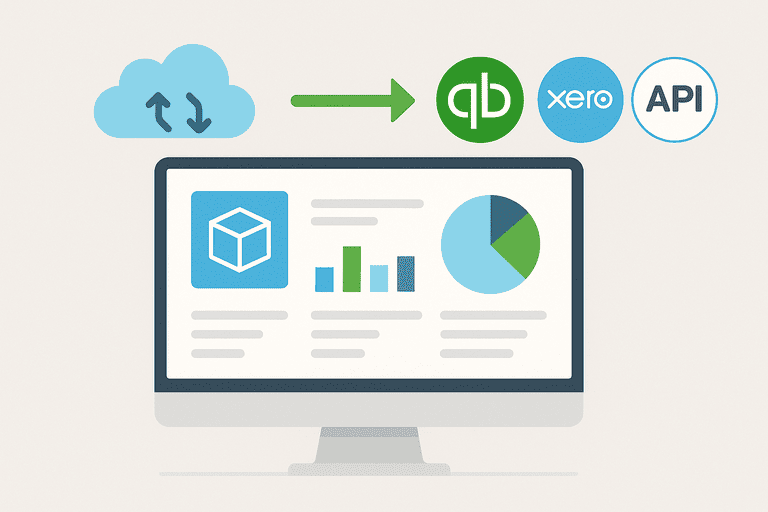Inventory Management Integrations with Accounting Software
Learn how integrating inventory management with accounting software saves time, reduces errors, and improves financial reporting.

Introduction
Inventory management and accounting are often treated as separate functions. One tracks what you have, the other tracks what it’s worth. But when they don’t talk to each other, businesses face errors, delays, and missed insights.
That’s why integrating inventory management with accounting software has become a best practice. It bridges operations and finance, ensuring that stock levels, asset values, and costs always align.
This article explores how integrations work, their benefits, and the best practices for connecting your systems.
Why Integration Matters
When inventory systems and accounting tools run separately:
- Stock updates lag behind financial records.
- Manual data entry causes mistakes.
- Reports don’t reflect real-time values.
- Budgeting decisions rely on outdated data.
Integration ensures one source of truth across departments.
How Integration Works
Most integrations happen through APIs that sync data between inventory management software and accounting platforms.
Typical Process
- Asset/Stock Added → Item entered into inventory system.
- Data Sync → System pushes data to accounting software.
- Automatic Updates → Costs, depreciation, or usage recorded in real time.
- Reporting → Unified data supports financial analysis and audits.
Common Accounting Platforms Supported:
- QuickBooks
- Xero
- FreshBooks
- NetSuite
- Sage
Benefits of Inventory–Accounting Integration
1. Real-Time Financial Accuracy
- Every asset movement is instantly reflected in accounting.
- Eliminates mismatches between stock levels and financial statements.
2. Reduced Manual Entry
- No double entry into two systems.
- Lower error rates, faster processes.
3. Improved Compliance
- Consistent records simplify audits and regulatory checks.
- Helps meet industry reporting standards.
4. Better Cash Flow Management
- Real-time view of asset costs and inventory value.
- Easier to forecast budgets and plan purchases.
5. Data-Driven Decisions
- Reports combine operational and financial data.
- Managers can identify which assets generate the best ROI.
Example: Cafe Chain with QuickBooks Integration
A small cafe chain used spreadsheets for stock and QuickBooks for accounting. Inventory often didn’t match reported costs, leading to $15,000 in discrepancies annually.
After integrating with inventory system:
- Ingredient usage synced automatically with QuickBooks.
- Costs were updated in real time.
- Manual entry dropped by 80%.
- Financial reports became accurate, improving supplier negotiations.
👉 Related reading: How Cloud-Based Asset Tracking Beats On-Premise Solutions
What Data Gets Synced?
Depending on the integration, businesses can sync:
- Stock levels — current counts updated in accounting.
- Asset purchases — automatically added as expenses.
- Depreciation schedules — synced for IT and equipment.
- Cost of Goods Sold (COGS) — calculated in real time.
- Disposals or write-offs — recorded instantly.
Best Practices for Successful Integration
- Choose compatible systems — ensure your inventory tool integrates with your accounting platform.
- Define sync rules — decide what data should flow both ways.
- Start with core items — pilot the integration with one asset category.
- Train staff — ensure finance and operations teams understand new workflows.
- Review regularly — audit data accuracy and refine settings.
Common Mistakes to Avoid
- Assuming “one-size-fits-all” — some integrations are basic, others detailed.
- Overloading syncs — syncing too much data creates noise.
- Ignoring security — ensure data is encrypted during transfer.
- Skipping testing — errors multiply without a staged rollout.
Conclusion
Integrating inventory management with accounting software eliminates silos, reduces errors, and delivers real-time financial accuracy.
For small businesses, it means less manual entry and better compliance. For larger organizations, it supports data-driven decisions and stronger ROI.
The bottom line: integration saves money, improves reporting, and makes both operations and finance more effective.
👉 Want to keep your inventory perfectly organized? Try? Try InvyMate today — the QR-powered tool that simplifies tracking, auditing, and collaboration.